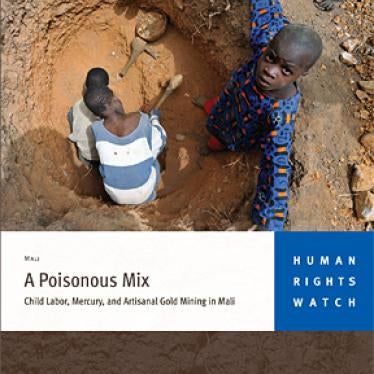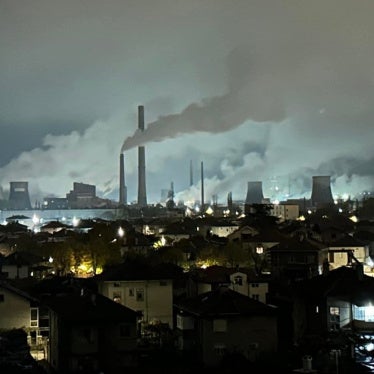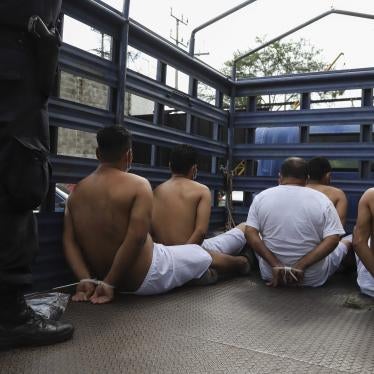Suzanne, an 11-year-old who lives in Mali, eagerly explained how she handles deadly mercury to mine gold to help support her family.
“Once the ore is panned, you put a bit of mercury in. You rub the ore and the mercury with your two hands,” Suzanne told Human Rights Watch Researcher Juliane Kippenberg. “Then, when the mercury has attracted the gold, you put it on a metal box and burn it. When I have finished, I sell the gold to a trader. I do this daily… I know mercury is dangerous, but I don’t know how. I do not protect myself.”
Now, there is a new treaty designed to limit mercury exposure. Human Rights Watch played a key role in pushing for measures in the treaty that could protect tens of thousands of children across Africa, Asia, and Latin America who, like Suzanne, mine gold using mercury.
Although Suzanne has learned how to make a living mining gold, she had yet to learn about the dangers of mercury. She did not know that she should never handle mercury with bare hands or burn it because it could permanently damage her health. Mercury is extremely toxic and is particularly harmful to children. It attacks the central nervous system and can also affect lungs, kidneys, and immune and respiratory systems.
Human Rights Watch has documented the harmful use of mercury in gold mining in Mali, Tanzania, Nigeria, and Papua New Guinea. A doctor in Papua New Guinea told us about some of his patients, who were small-scale gold miners: “We have dozens of cases of mercury poisoning.… They stare blankly at the wall. You cannot talk to them, they are not conversant, nothing. They are like zombies. And we have several cases that did not recover.”
But the time has come for government action. On January 19, more than 140 countries agreed to an international treaty on mercury. It is the first treaty to tackle mercury use and emissions, including strategies to control and reduce mercury exposure. The treaty will oblige governments to protect children from mercury exposure in small-scale mining operations and take health measures for communities affected by mining. It also promotes prevention, testing, data collection, and treatment for mercury-related conditions–measures Human Rights Watch fought hard to have incorporated into the treaty.
Since 2011, Human Rights Watch has done intense advocacy work around the treaty, attending international talks in Kenya, Uruguay, and Switzerland. We arranged direct meetings with more than 30 governments to urge them to support our recommendations, and proposed language that the treaty should include. When Western governments opposed a stand-alone article on health, we urged the United States, Japan, the European Union, and Canada to beef up treaty language on health.
In small-scale mining operations, mercury is mixed with the ore, where it binds with gold. Around the world, at least 13 million people—many of them children—use this process. The waste is often simply dumped into soil and water in residential areas, exposing whole communities. Mercury remains in the environment for a long time—circulating through air, water, soil and animals used for food. There is no known safe level of exposure, yet health providers rarely have the resources to diagnose or treat mercury poisoning.
The treaty, named the Minamata Convention after a mercury disaster in a Japanese town in the 1950s, is to be adopted at a diplomatic conference in Japan in October. It will take effect once 50 countries have ratified it.
Human Rights Watch is using the momentum of the new treaty to push leaders around the world for more effective action on mercury use, urging them to include child labor and health components in national action plans on mercury and in artisanal gold mining operations.






